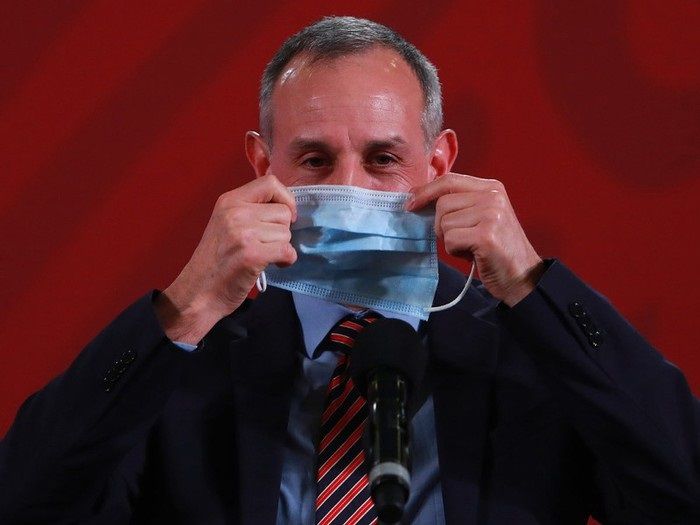What is Herd Immunity, according to Lopez-Gatell
Explanation of the concept in the epidemiology of infectious diseases of herd immunity, which allows some useful prevention decisions to be made.

Hugo López-Gatell, Undersecretary of Prevention and Health Promotion, explained at the conference the important concept in the epidemiology of infectious diseases of herd immunity, which allows certain useful decisions to be made in the practice of prevention and control of epidemics. The name comes from the set of individuals of a species. "We often think of animal species of interest for livestock, but any community is a herd," he explained.
Infectious diseases are characterized by their transmission mechanisms. Some diseases are transmitted through the respiratory tract, such as COVID-19, through water and food, vectors like mosquitoes, blood, or direct contact. The concept of herd immunity applies to any disease of any transmission mechanism, but is "more clearly identifiable" when talking about diseases transmitted between humans.
When there is a community of people, and some of them have the disease, in daily life you can only interact with a limited number of other people. "You don't interact with all the people in existence," he said. "It may be that some of those people we interact with, initially we are all susceptible to disease. That's the case with an emerging disease epidemic like COVID-19, where no one, before the first days of January, had immunity to COVID-19 because it's a new disease.
Lopez-Gatell reported that one person, "whoever they interact with," can cause a contagion "at some probability. For a chain of transmission or spread of the disease to occur, it requires an infectious person to infect someone. "Days go by and both people are cured of COVID-19, as is the case for eight out of 10 people with no risk factors," he said.
Then, "we develop immunity and are biologically resistant to COVID-19. If an infectious person comes in, and that person interacts with us and leaves, we can no longer be infected. We represent a barrier to the contagious ability of the new person who comes in to infect. If there are two of us and that person interacts with others, they can still infect others".
The more people who are immune, the less likely the virus is to spread. "If there are four of us, it's less likely to spread. The more people who are immune, the less likely someone who is contagious is to infect those who are not. You don't need to go to 100% because those of us who are immune are a barrier to those infections". He exemplified a hypothetical situation: if 80% of the population is immune, four out of five people who meet someone who has the disease will not get sick and will not spread it. López-Gatell explained that the metaphor or image of the herd is of a group that puts a barrier to contagion.
The more contagious the disease, the larger the percentage of people who are immune needs to be for the critical point of protection conferred by herd immunity to be achieved.
"For vaccination programs, it is very important because it determines what proportion of people should be immunized to ensure that an outbreak does not occur or that if an outbreak does occur it does not spread". COVID-19 has a higher contagiousness level than influenza but lower than measles. Some estimates indicate that it would take 70% of immune people, in any population, for the effect of herd immunity to contribute to the depletion of the epidemic. Estimating the proportion of people who are immune is one of the important elements for public health decisions regarding the end of mitigation and control measures.
For the coronavirus pandemic in Mexico, serological surveys are planned: surveys that will recognize the proportion of people in the country who have immunity to COVID-19. "There are several survey exercises that we will be doing," said Lopez-Gatell, referring to surveys in the workplace and the National Health and Nutrition Survey, which will integrate "a COVID-19 component. The serological survey means interviewing to recognize certain characteristics along with taking a blood specimen to identify antibodies and therefore immunity in humans.
"One of the limitations that the whole world faces is that, even though it has been more than four months since the beginning of this epidemic, there is no solid and consistent scientific evidence of consensus on when antibodies start to increase concerning the day of infection, how much the concentration increases, how long they last, and, most importantly, if the concentration that can be observed means biological protection," said the undersecretary.
In Mexico, serological surveys have not been initiated because "it is more convenient to wait for the moment when there is a decline in the epidemic curve". The National Health and Nutrition Survey plans to begin in July of this year. The undersecretary also explained the term "counterfactual scenario": flattening the curve means that, compared to the scenario of what would have happened if no interventions had been made, you have a curve, the sum of all the bars, 75% smaller.




